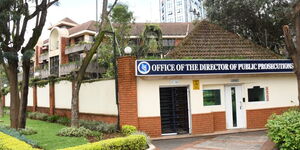With the rapidly changing Information, Communication and Technology (ICT) sector and emerging technologies, the Communication Authority (CA) established new sector guidelines and regulations to enable the licensing of existing amateur radio stations.
According to the CA, the guidelines are meant to reduce the barriers to entry for amateur stations in the industry.
"The Regulatory Sandbox is available to an Applicant who has its company incorporated in Kenya or is licensed by an ICT market regulator in an equivalent jurisdiction; and, intends to offer an innovative product, solution, or service in Kenya following a successful exit from the Regulatory Sandbox," reads the framework in part.
A sandbox is a testing environment in a computer system in which new or untested software or coding can be run securely.
An Applicant may apply to participate in the Regulatory Sandbox at any time as the Authority will be reviewing applications on a rolling basis.
For an applicant to get approval for the license, he or she is required to submit the following documents to the authority;
- Completed application form
- Certified copies of all registration documents;
- Certified list of directors, if applicable;
- Certified details of the proprietors/founder(s), if the applicant is not an incorporated company;
- CVs for all founders and key management personnel;
- Outline of the business model for the product, solution, or service which should include:
- The potential benefits of the proposed product, solution, or service for any of the subsectors regulated by the Authority in Kenya.
After the evaluation process, the authority will issue a letter of approval to successful applicants to participate in the Regulatory Sandbox.
Once granted approval, the Participant shall be considered an authorised person/entity in line with the Kenya Information and Communications Act (KICA),1998, and the attendant regulations.
According to the CA, the Regulatory Sandbox will serve as evidence that the product or service is sufficiently mature to be tested in a live environment or a sound rationale for admission where the product is not ready for testing.
The Sandbox further acts as evidence that the Applicant has adequate arrangements to support live testing, including measures to protect the interests of consumers and other licensees if the test fails.
To obtain approval to exit the Regulatory Sandbox under the new framework, an applicant will be required to submit a projected plan and clear strategy for exiting.
CA notes that the projected plan and strategy for exiting the Regulatory Sandbox submitted by the applicant must include scenarios for transitioning and/or compensating customers in case the proposed product, solution, or service is discontinued.
Furthermore, the plan must have proposals for deploying the product, solution, or service on a commercial scale in Kenya after a successful exit from the Regulatory Sandbox; as well as a draft sandbox testing plan.
The applicant will have to wait for fourteen working days before getting a communication from the Authority on the fate of their application to exit the Sandbox.
KICA sets out the general legal framework for telecommunications in Kenya. The law came into force on October 1, 1998 (The Kenya Communication Act) and has undergone numerous amendments.
For further clarity, participants are required to visit the authority's website at www(dot)ca(dot)go(dot)ke(slash)consumers(slash)public consultations before the close of business on February 21, 2023.












